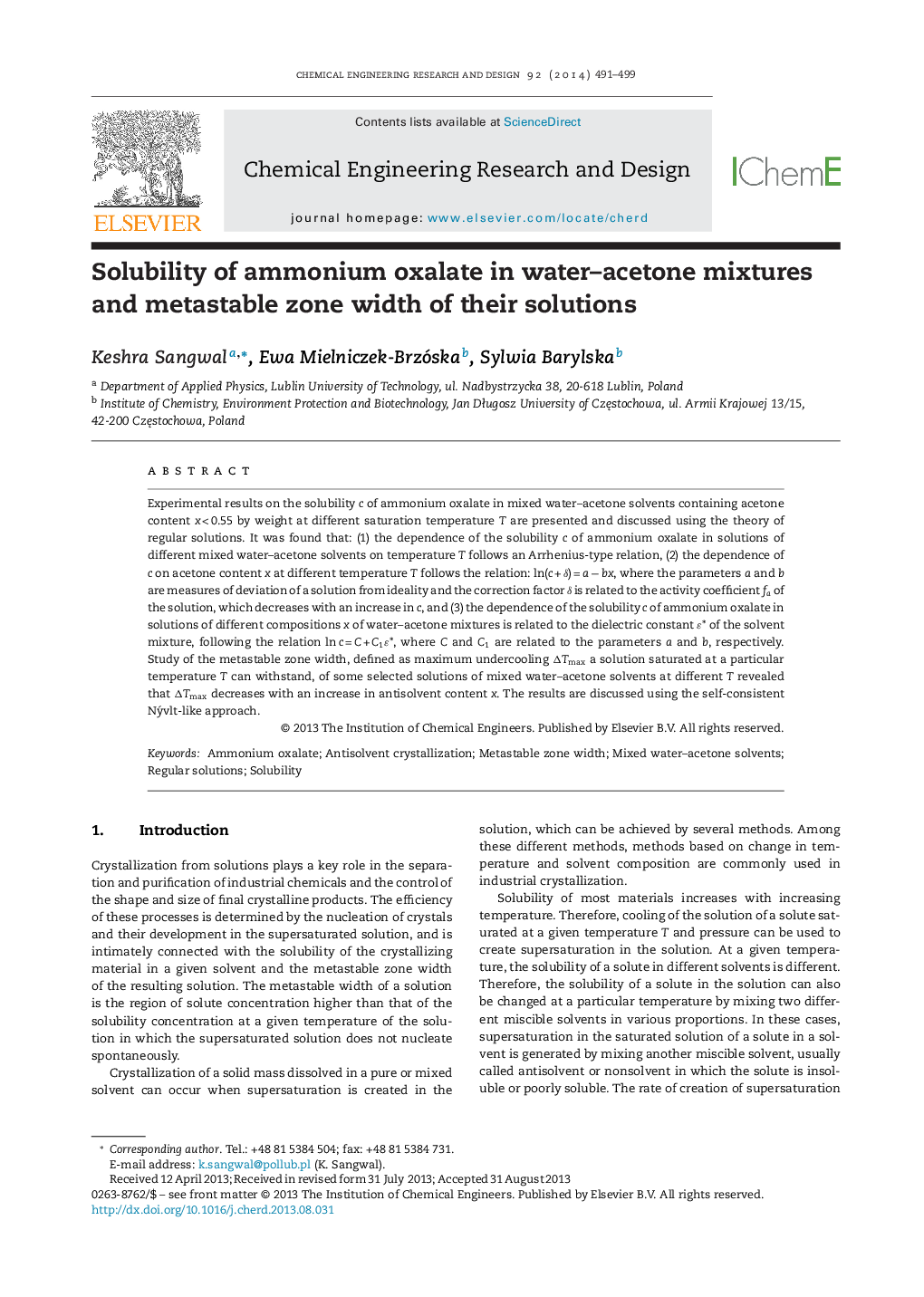| Article ID | Journal | Published Year | Pages | File Type |
|---|---|---|---|---|
| 620579 | Chemical Engineering Research and Design | 2014 | 9 Pages |
•Solubility c of ammonium oxalate (AO) in mixed water–acetone solvents is studied.•Dependence of c on temperature T in mixed solvents follows Arrhenius-type relation.•Logarithm of solubility decreases roughly linearly with increasing acetone content.•Logarithm c increases roughly linearly with dielectric constant of mixed solvents.•Metastable zone width in solutions decreases with increasing acetone content.
Experimental results on the solubility c of ammonium oxalate in mixed water–acetone solvents containing acetone content x < 0.55 by weight at different saturation temperature T are presented and discussed using the theory of regular solutions. It was found that: (1) the dependence of the solubility c of ammonium oxalate in solutions of different mixed water–acetone solvents on temperature T follows an Arrhenius-type relation, (2) the dependence of c on acetone content x at different temperature T follows the relation: ln(c + δ) = a − bx, where the parameters a and b are measures of deviation of a solution from ideality and the correction factor δ is related to the activity coefficient fa of the solution, which decreases with an increase in c, and (3) the dependence of the solubility c of ammonium oxalate in solutions of different compositions x of water–acetone mixtures is related to the dielectric constant ɛ* of the solvent mixture, following the relation ln c = C + C1ɛ*, where C and C1 are related to the parameters a and b, respectively. Study of the metastable zone width, defined as maximum undercooling ΔTmax a solution saturated at a particular temperature T can withstand, of some selected solutions of mixed water–acetone solvents at different T revealed that ΔTmax decreases with an increase in antisolvent content x. The results are discussed using the self-consistent Nývlt-like approach.
